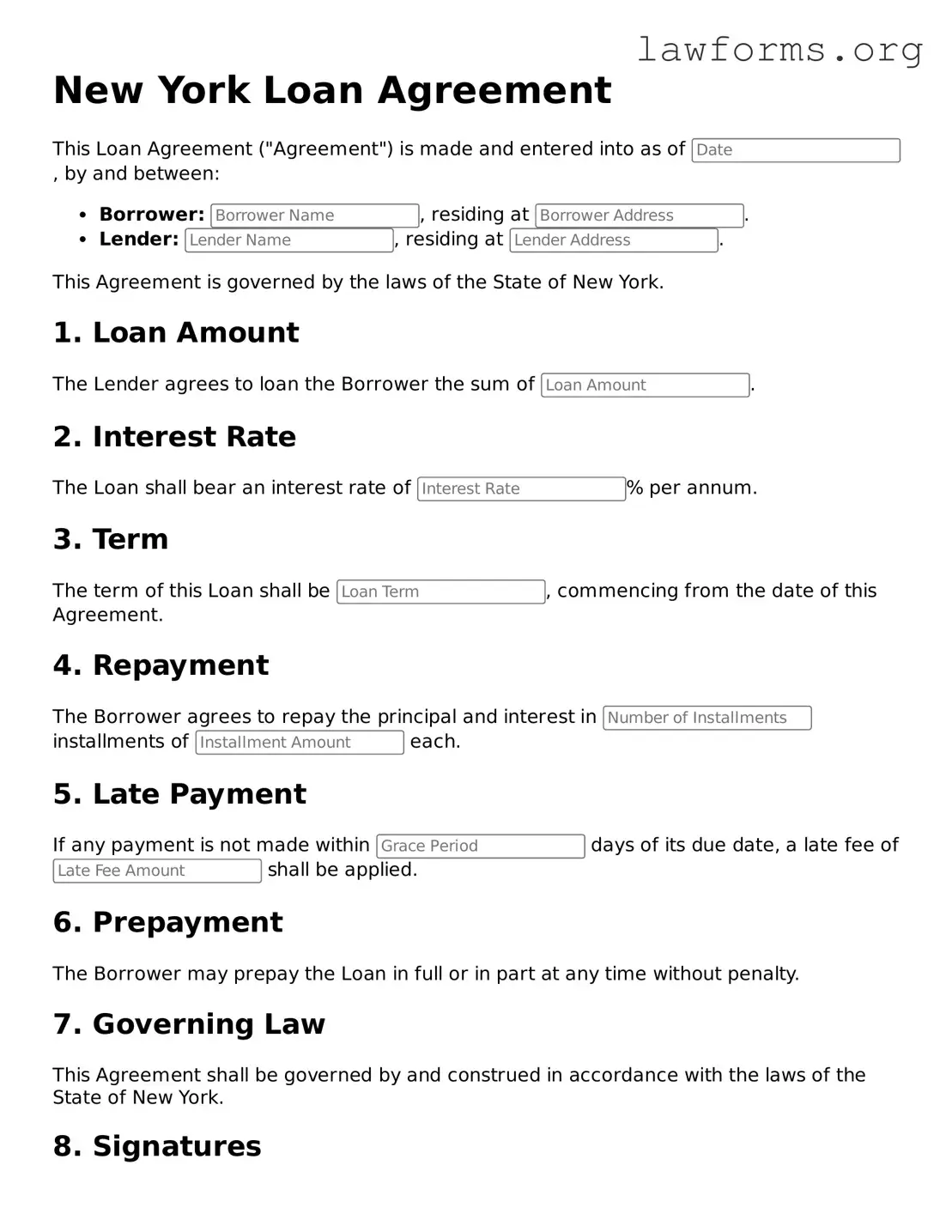Attorney-Approved Loan Agreement Template for the State of New York
The New York Loan Agreement form is a legal document that outlines the terms and conditions of a loan between a lender and a borrower. This form serves to protect both parties by clearly defining their rights and obligations. To ensure a smooth borrowing process, consider filling out the form by clicking the button below.
Customize Document Online
